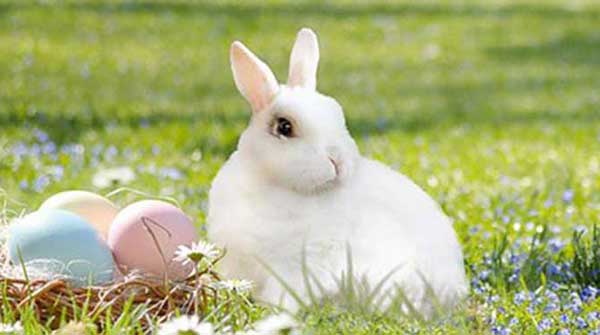What do bunnies and eggs have to do with the religious celebration of Easter?
 The community Easter egg hunt was fun until the Easter bunny showed up. My granddaughter took one look at the hairy hare, and the bliss of savouring a chocolate egg turned to terror. My grandson carried on happily eating his treat until the Easter bunny approached him, at which point he, too, began to cry.
The community Easter egg hunt was fun until the Easter bunny showed up. My granddaughter took one look at the hairy hare, and the bliss of savouring a chocolate egg turned to terror. My grandson carried on happily eating his treat until the Easter bunny approached him, at which point he, too, began to cry.
The physical manifestation of the Easter bunny is fairly recent. It was certainly not part of the Easters of my childhood, nor of that of my children. The shy but fun-loving mythical creature existed only in imagination.
Today, the Easter bunny is almost as visible as Santa Claus, making special appearances at community egg hunts and showing up at malls across the country for photo ops. But the legend of a bunny that drops eggs for children to find on Easter morning is centuries old.
The first mention of an egg-toting bunny dates to 1572 in Germany, where children made nests for it and awoke on Easter morning to find the nests filled with coloured eggs. (Colouring eggs for Easter began in the 13th century.) In the 18th century, German immigrants brought the legendary bunny to America.
 |
| Related Stories |
| The overwhelming imagery of the Crucifixion
|
| Who was Pontius Pilate, the man who sentenced Jesus to death?
|
| In stillness, we find treasure
|
By the 19th century, candy companies in the eastern United States were producing rabbit-shaped candies for Easter. By 1930, people began associating jellybeans with Easter because of their oval (egg-like) shape. But this commercialization leads to the question: What do bunnies and eggs have to do with the religious celebration of Easter, the most important feast day of the Christian calendar?
Historians contest the origins of the Easter bunny. Unlike modern Halloween traditions, for which strong historical evidence points to ancient pagan celebrations, there’s little evidence to support a similar argument for Easter. The scant evidence points to the myth of Ostara, the Anglo-Saxon fertility goddess and a goddess of dawn and light.
Ostara was a friend of children. To amuse them, she changed her bird into a rabbit that brought forth brightly-coloured eggs. Ostara gave the coloured eggs to the children.
In the eighth century, the English monk Venerable Bede connected the word Easter and Eostre, a version of Ostara. This is the only historical evidence of the connection until 1835, when Jacob Grimm suggested that Easter is associated with Ostara for two reasons: she had a pet hare and she personified the rising sun. It wasn’t too much of a stretch to associate the dawn of a new day with resurrection and the Christian holy day.
The hare has other associations with Christianity. From the time of Aristotle through the late medieval ages, people thought the hare could reproduce without a mate. This led Christianity to associate the hare with the virginity and purity of Mary, the mother of Jesus.
An ancient motif of Buddhist origin depicts three hares running in a circle; each share an ear that forms a triangle. The motif travelled east to west along the Silk Road during the time of the Mongols and shows up in Islamic, Christian and Jewish iconography. Eventually, Christianity came to interpret the union of the three hares as a symbol of the communal aspect of the Holy Trinity.
Although it’s difficult to say for sure why the egg became a symbol for Easter, it may relate to the medieval practice of abstaining from eggs during Lent, after which time people feasted on them. Similarly, at some point, it became traditional to abstain from chocolate during Lent. The shape of an egg and chocolate combined to become a favourite Easter treat.
Because of its association with fertility and birth, the egg symbolizes the new life of the resurrection. It represents emergence from the tomb and is a metaphor for transformation. The egg doesn’t just remind believers of the resurrection of Jesus. It also reminds them of their spiritual transformation, a transformation strengthened through the Lenten practices of prayer, fasting and acts of generosity.
Over the centuries, bunnies and eggs became staples of Easter celebrations because of their symbolic associations with the death and resurrection of Jesus.
While those associations have receded into the background, the tradition of hunting for eggs contributes to the joy of Easter, even if the Easter bunny is a little bit scary.
Louise McEwan has degrees in English and Theology. She has a background in education and faith formation.
For interview requests, click here.
The opinions expressed by our columnists and contributors are theirs alone and do not inherently or expressly reflect the views of our publication.
© Troy Media
Troy Media is an editorial content provider to media outlets and its own hosted community news outlets across Canada.
